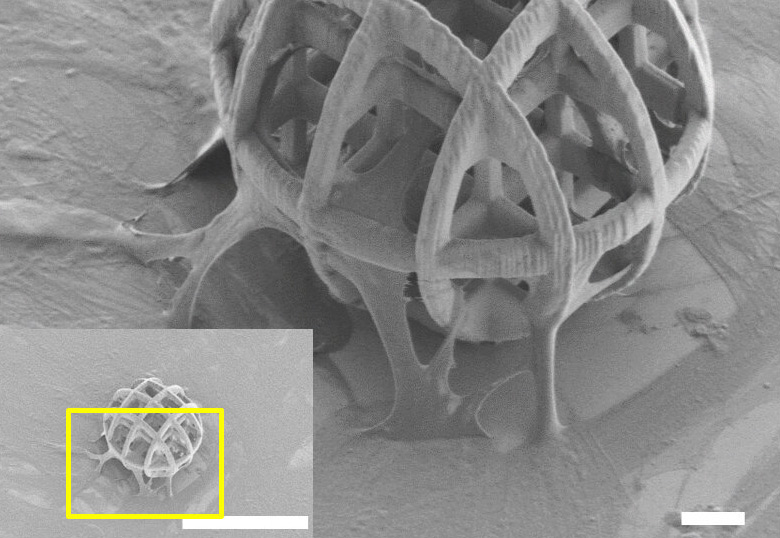
4th June 2019 Microrobots deliver stem cells to targeted tissue Previous research has demonstrated tiny robots, or microrobots, guided through blood vessels by magnetic fields to deliver drugs. A new study has now achieved the same feat while carrying stem cells.
Stem cells have attracted huge interest for their potential to treat diseases and repair damaged tissue. These cells can differentiate into other cell types, and can divide in self-renewal to create more of the same type. At present, delivering stem cells to a targeted area is only possible via injection – but this can be difficult and risky for hard-to-reach places in the body, resulting in tissue damage and a low survival rate for the injected stem cells. Clearly, a more accurate and careful method is needed. In recent years, medical researchers have begun experimenting with microscopic devices able to travel inside blood vessels like miniature submarines and carry payloads of drugs to precisely where needed. These tiny instruments go by various names – microbots, nanobots, nanoparticles, molecular machines and so on. Until now, they were only able to deliver drugs and normal cells, but a new study shows that microrobots can transport stem cells. A team from several institutions in South Korea and one in Switzerland has published details of their work in the journal Science Robotics. They describe the production of microrobots through 3D laser lithography, using a photocurable polymer with a pore size of 15 micrometres (μm), chosen with consideration to the size of a stem cell. Deposition of nickel and titanium layers enabled magnetisation and biocompatibility, while two designs – a helix and a sphere – allowed the testing of different properties and movements. Directed by an external magnetic field, the microrobots performed a variety of tasks – carrying stem cells to an empty cavity in a live mouse, through an isolated blood vessel, through a cell culture and through a mouse brain slice. In addition to stem cells, the researchers also demonstrated the transport of cancer cells, moving them through a microfluidic "organ on a chip". In their paper, the team explain that development of this system is still in its early stages with respect to actual in vivo applications. Real-time visualisation and localisation are required for precise manipulation of the microrobots in such complex fluidic environments. Human subjects in clinical trials will only be possible following additional safety tests. However, it is tempting to imagine a future in which more advanced versions of these robots – perhaps equipped with miniature cameras, sensors and other wireless technologies – could autonomously roam the body and treat formerly incurable ailments.
Comments »
If you enjoyed this article, please consider sharing it:
|







